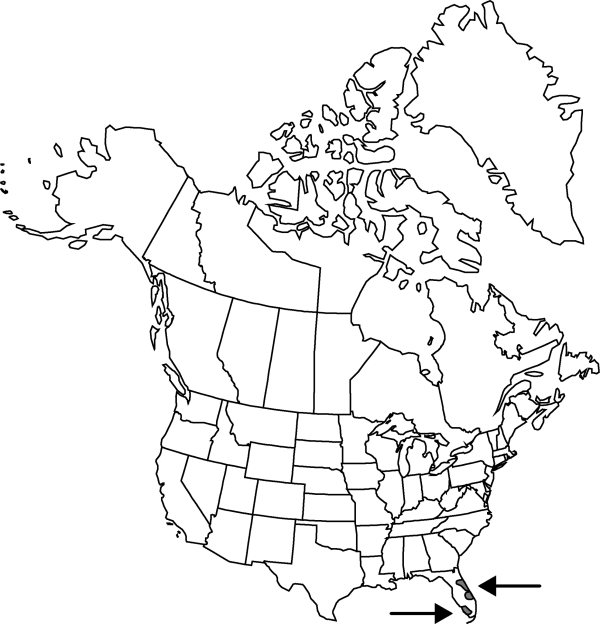Selenicereus pteranthus
Contr. U. S. Natl. Herb. 12: 431. 1909.
Plants terrestrial to epiphytic, vinelike, clambering, pendent. Roots frequently aerial and adventitious. Stems bluish green to purple, to 100–300 × 2.5–5 cm; ribs 4–6, acute; areoles 2–2.5 cm apart along ribs, 1.5–3.0 mm. Spines 1–5, short conic (acicular on immature stems), 1–3 mm; radial and central spines not distinguishable. Flowers 25–30 × 20 cm; outer tepals brown or purplish (or yellow?), narrow; inner tepals white, oblanceolate, apex acute; areoles of ovary and flower tube bearing numerous scales and long, white, hairlike spines. Fruits red, spheric, 45–70 mm diam., hidden by short (to 1 cm), yellowish, bristlelike spines and long, white hairlike spines. 2n = 22.
Phenology: Flowering year-round.
Habitat: Disturbed coastal sites
Elevation: 0-10 m
Distribution

Introduced; Fla., Mexico.
Discussion
Selenicereus pteranthus is widely cultivated for its showy, fragrant flowers and occasionally escapes. The species is reported from six counties in Florida, where it is presumed naturalized.
Selected References
None.